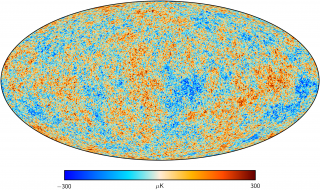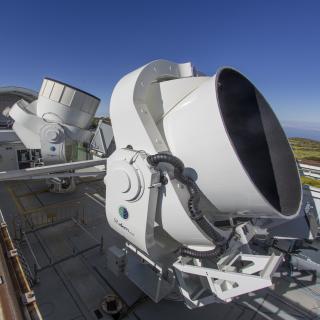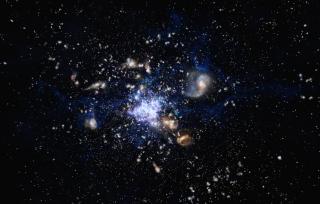Bibcode
López-Caraballo, C. H.; Ruiz-Granados, B.; Génova-Santos, R. T.; Fernández-Torreiro, M.; Rubiño-Martín, J. A.; Peel, M. W.; Poidevin, F.; Artal, E.; Ashdown, M.; Barreiro, R. B.; Casas, F. J.; de la Hoz, E.; González-González, R.; Guidi, F.; Herranz, D.; Hoyland, R.; Lasenby, A.; Martínez-González, E.; Piccirillo, L.; Rebolo, R.; Tramonte, D.; Vansyngel, F.; Vielva, P.; Watson, R. A.
Bibliographical reference
Monthly Notices of the Royal Astronomical Society
Advertised on:
1
2024
Citations
4
Refereed citations
4
Description
We use the new QUIJOTE-MFI wide survey (11, 13, 17, and 19 GHz) to produce spectral energy distributions (SEDs), on an angular scale of 1°, of the supernova remnants (SNRs) CTB 80, Cygnus Loop, HB 21, CTA 1, Tycho, and HB 9. We provide new measurements of the polarized synchrotron radiation in the microwave range. The intensity and polarization SEDs are obtained and modelled by combining QUIJOTE-MFI maps with ancillary data. In intensity, we confirm the curved spectra of CTB 80 and HB 21 with a break frequency νb at 2.0$^{+1.2}_{-0.5}$ and 5.0$^{+1.2}_{-1.0}$ GHz, respectively; and spectral indices above the break of $-0.6^{+0.04}_{-0.05}$ and $-0.86^{+0.04}_{-0.05}$. We provide constraints on the Anomalous Microwave Emission, suggesting that it is negligible towards these SNRs. From a simultaneous intensity and polarization fit, we recover synchrotron spectral indices as flat as -0.24, and the whole sample has a mean and scatter of -0.44 ± 0.12. The polarization fractions have a mean and scatter of 6.1 ± 1.9 per cent. When combining our results with the measurements from other QUIJOTE (Q-U-I JOint TEnerife CMB experiment) studies of SNRs, we find that radio spectral indices are flatter for mature SNRs, and particularly flatter for CTB 80 ($-0.24^{+0.07}_{-0.06}$) and HB 21 ($-0.34^{+0.04}_{-0.03}$). In addition, the evolution of the spectral indices against the SNRs age is modelled with a power-law function, providing an exponent -0.07 ± 0.03 and amplitude -0.49 ± 0.02 (at 10 kyr), which are conservative with respect to previous studies of our Galaxy and the Large Magellanic Cloud.
Related projects

Anisotropy of the Cosmic Microwave Background
The general goal of this project is to determine and characterize the spatial and spectral variations in the temperature and polarisation of the Cosmic Microwave Background in angular scales from several arcminutes to several degrees. The primordial matter density fluctuations which originated the structure in the matter distribution of the present
Rafael
Rebolo López

QUIJOTE CMB Experiment (Q-U-I JOint TEnerife CMB Experiment)
QUIJOTE es un programa de dos telescopios y su batería de instrumentos, instalados en el Observatorio del Teide, dedicados fundamentalmente a la caracterización de la polarización del Fondo Cósmico de Microondas, en el rango de frecuencias de 10-42 GHz.
José Alberto
Rubiño Martín

Molecular Gas and Dust in Galaxies Across Cosmic Time
Two of the most fundamental questions in astrophysics are the conversion of molecular gas into stars and how this physical process is a function of environments on all scales, ranging from planetary systems, stellar clusters, galaxies to galaxy clusters. The main goal of this internal project is to get insight into the formation and evolution of
Helmut
Dannerbauer